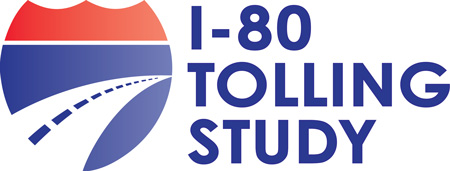- Home
- Administration
- Aeronautics
- Business with WYDOT
- Construction Projects
- Driver License and Records
- Economic Stimulus Projects (ARRA - TIGER)
- Engineering and Technical Programs
- Fuel Tax
- Highway Safety
- Human Resources
- Manuals and Publications
- News and Information
- Permits
- Planning/Projects/Research
- Titles, Plates and Registration
- Travel
- Trucking / Commercial Vehicles
- Vehicle Business Regulation
- Wyoming Highway Patrol
- Search
- Sitemap
I-80 Tolling Study

Information gathering and analysis to determine the possibility of placing a toll on Interstate 80 across southern Wyoming was conducted during 2008 and 2009, resulting in the issuance of a comprehensive report of findings in September 2009.
In early 2010, the Wyoming Legislature voted against continued development of the tolling concept, and no further study has occurred.
Study on the concept of tolling on I-80 had begun began the previous year following authorization by the Legislature’s Joint Transportation, Highways and Military Affairs Interim Committee. The initial phase of work resulted in an initial feasibility study report.
A typical section of I-80 in Wyoming has a traffic count of about 13,000 vehicles per day, with heavy trucks making up about half of the traffic. Traffic is projected to continue increasing, with heavy truck volume alone approaching nearly 16,000 per day by 2037. Meanwhile, estimates show maintaining I-80 in its present condition over the next 30 years would cost more than $6.4 billion, after adjusting for inflation, exceeding the total of revenue expected to be available for maintenance of the entire state highway system, much less I-80.
In the I-80 tolling study, construction cost estimates were developed for the additional travel lanes (including new or reconstructed bridges), as well as right of way acquisitions and utility relocations and adjustments. Other fiscal impacts analyzed included how “toll diversion” (whereby some traffic would use alternate routes to avoid paying a toll) might affect local businesses and state and federal fuel tax receipts.
In addition, the study provided information pertaining to the available types of tolling technology (to include electronic, automated tolling) and how this technology might be implemented on I-80, and how it might be integrated with types of intelligent transportation system (ITS) technology.
Other objectives of the study included:
- Identify and highlight any safety improvements from adding capacity and instituting tolling;
- Determine probable impacts on law enforcement, including what new resources would have been needed by the Highway Patrol;
- Describe the number and location of tolling points needed to optimize revenue while minimizing operational costs and inconvenience to the public;
- Analyze the possible loss of federal funding for interstate construction and maintenance and identify strategies to minimize the loss of this type of funding; and
- Provide information on developing a strategy to gain federal approval for tolling, obtain environmental clearances, and resolve possible legal challenges.





